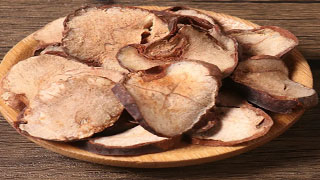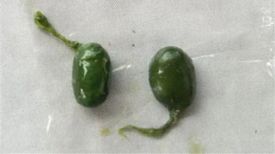
1. Alias
Pistachio, Monkey Chestnut, Borneo, Suluozi, Sologuo, Fairy Chestnut.
2. Plant morphology
Deciduous tree, up to 25 meters tall, with palm shaped compound leaves opposite each other, small leaves 5-7, long elliptical or long elliptical ovate in shape, apex gradually pointed, base wedge-shaped, margin with fine serrations, only base with sparse soft hairs when young, lateral veins 13-17 pairs, and small petioles; Total stem length. Large cone-shaped inflorescence; Male flowers and bisexual flowers are on the same plant; Calyx tube shaped, irregular 5-lobed; Petals 4, white, with long claws; 6 stamens, unequal filaments; The ovary is superior. The capsule is nearly spherical, flat at the top, brownish yellow, with small protrusions, and splits into three petals when ripe. The seeds are nearly spherical in shape, with a light white navel, accounting for about 1/2 of the seeds. The flowering period is from May to July, and the fruiting period is from August to September.
3. Origin distribution
Wild or cultivated. Mainly produced or cultivated in Shaanxi, Henan, Jiangsu, Sichuan, Hubei and other places
4. Harvesting and processing
Harvest fruits in autumn when they are ripe, remove the skin, and dry them in the sun or at low temperatures.
5. Characteristics of medicinal herbs
Flat spherical or nearly spherical, resembling chestnuts, with a diameter of 1.5-4 centimeters. The surface is brown or brownish, with many wrinkles, unevenness, and slight luster: the navel color is light, nearly circular, accounting for 1/4 to 1/2 of the seed area; There is a raised ridge on one side, some of which are not very obvious. The seed coat is hard and brittle, with 2 cotyledons, thick and hard, resembling chestnut kernels, yellow white or light brown, powdery. Odorless, taste bitter first and then sweet.
6. Sexual Taste Returning to the Classics
Warm in nature, sweet in taste. Return to the liver meridian and stomach meridian.
7. Effect and Function
Regulate qi and relieve pain in the stomach. It belongs to the category of Qi regulating medicine.
8. Clinical application
Dosage: 3-9 grams, decoct in water and take orally; Or grind and consume after simmering. Used to treat chest distension, tightness, and epigastric pain.
9. Pharmacological research
The flavonoid glycosides contained can counteract the increased vascular permeability of rabbit skin caused by histamine; Seven leaf saponins have the effects of reducing swelling, anti-inflammatory, and lowering cholesterol.
10. Chemical composition
Containing 31.8% fatty oil, the main components include oleic acid and stearic acid glycerides, starch, fibrous crude protein, and seven leaf saponins. It still contains various flavonoid glycosides with quercetin and kaempferol as aglycones.
11. Usage taboos
Patients with Qi Yin deficiency should take it with caution. Children are more sensitive to β - aescinat sodium, and there have been 5 cases of kidney failure in children abroad due to drug overdose (10-20 times the commonly used amount). There have been two reports of throat discomfort, nausea, and vomiting adverse reactions after taking Sarozeb in China.
12. Compatibility prescription
① Treating stomach pain: Take one piece of Saros seed, remove the shell, crush and fry it for consumption. (The Compendium of Materia Medica cites the Hundred Grass Mirror)
② Treating nine types of heartache: burning ash with Saros seeds, brewing wine and taking it. (Quoted from "Yang Chunya's Prescription Verification" in "Gangmu Shiyi")
③ Treatment of breast lobular hyperplasia: 9-15g of Saros seed. Water decoction as a substitute for tea. (Zhejiang Medicinal Plant Chronicles)
⊙ The content of the article is for clinical reference only. Non TCM professionals are not allowed to test drugs.


